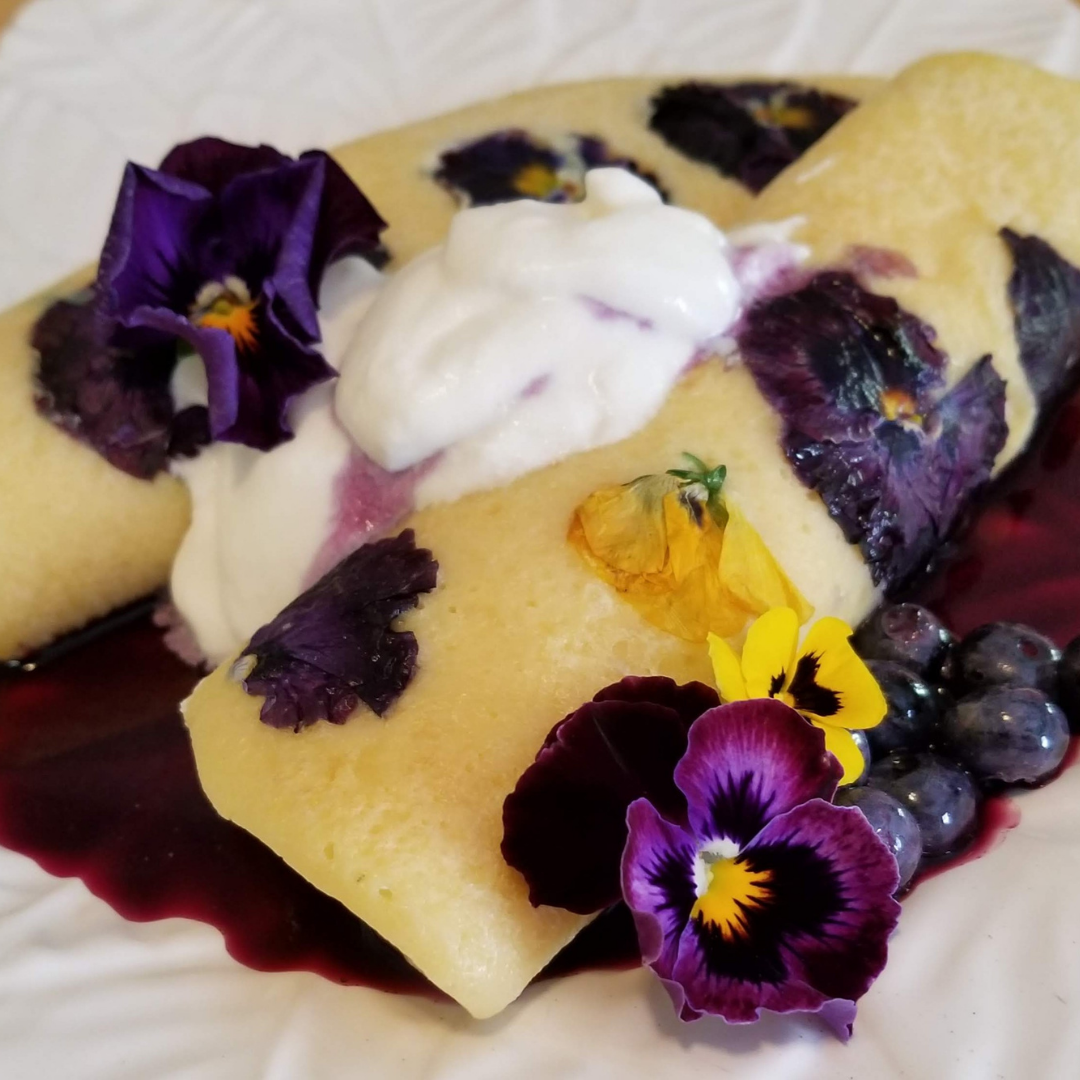Playing With Pansies – The Energetic And Healing Properties Of Violets
“A vi’let on the meadow grew, That no one saw, that no one knew, It was a modest flower.
A shepherdess pass’d by that way– Light footed, pretty and so gay;
That way she came, Softly warbling forth her lay.”
Johann Wolfgang von Goethe
Heart’s Ease, Johnny Jump Ups, violets, viola, sweet violets, or pansies - whatever you choose to call them - are the early heralds of spring. Their bright faces smile up with delight through the snow or leaf litter as soon as the sun starts to warm the ground. A gentle, yet strong flower, they can withstand trampling and heavy frosts. I’ve had a few bloom in pots through the entire winter in a protected area. Besides providing a simple beauty, violets offer quite the array of medicinal benefits. Most notably - pansies fight fire. But I am jumping ahead.
Violet’s mythical history
Violets were the food of Greek goddess, Io. Zeus, fearing the wrath of his jealous wife Hera, turned his lover Io into a heifer and gave her a pasture of violets to eat. Oh, thanks. I’m certain Io probably had a few choice words for Zeus, whether she got to express them, we don’t know. At least violets have a pleasing flavor. Napoleon later chose the violet as his symbol, and Pliny the Elder used violets to treat bronchitis and to nourish the Spleen. Throughout all of Europe, violets were featured in spring festivals as decorations and in foods and wines. Yes, violets are one of thousands of edible flowers.
Western nutritional highlights
From a western nutritional perspective, pansies blossoms contain a bit of vitamin A and C. The leaves are abundant in chlorophyll, that green stuff that makes your blood healthy, and pansies have some energetic – magic.
Viola’s Eastern nutritional energetics and highlights
Viola (Zi hua di ding) has been used for centuries in Asian medicine (Chinese medicine). The herb (blossom and leaf) is pungent, sweet and salty. It decongests, dissolves masses, stimulates and astringes excess fluids to drain unwanted moisture and accumulations. Violets enter the Lungs, Bladder, Kidney and Heart channels and they benefits the skin, nerves, fluids and joints.
Clears heat, toxic heat, fire, and inflammation – Viola is used in Asian medicine formulas to clear out strong heat patterns like chronic infections, hives, shingles, lymphatic conditions, and hyperactive histamine responses like rashes or sudden swelling of the lips. It is also currently being used as adjunct therapy in the treatment of many cancers with promising results. I find them very beneficial in inflammatory responses such as Long Covid or other post viral flare ups, and perimenopause, menopausal heat responses.
Promotes sweating and treats respiratory disorders – Viola can be used to help induce sweating to treat the onset of a cold, flu, or virus. Pansies help to expectorate toxic phlegm making them useful in bronchial problems from colds, allergies and asthma. While fighting Covid, I wished I had harvested and dried more viola leaves to help curb my fever. They blend beautifully with mint leaves.
Calms the nervous system, relieves fatigue and nourishes the Heart – Called Heartsease in many texts, violas were also used to settle the emotions and nervous tension. Use violets to help with chronic fatigue and nervous disorders including heart palpitations and nervous bladder.
Benefits the Bladder and urinary system – Viola helps to relieve incontinence, scanty or dripping urination and bladder infections.
Heals and repairs the skin, relieves itching – Use it internally and/or externally, viola is useful for eczema, ulcers, sprains, stings, red irritated skin and wounds.
Ways to use violets
Drink violets – Add blossoms to tea or lemonade. I often mix mine with other flavors raspberry leaf, nettle, and rose. On a hot day, consider dropping in a few frozen raspberries.
Eat them – Toss the greens and blossoms into salads, they have a pleasing little zip to them which compliments mellow salad greens like iceberg and leaf lettuces. Dash them blossoms over cakes or berries. How about Violet Crepes With Blueberry & Violet Sauce?
Use as violet water or violet oil – Use the water to flavor teas or as a refreshing facial rinse. Drop oil into a calming bath. Steep the leaves and blossom in water until fragrant.
Make up a vinegar – Use for everything from sun burns and bug bites to an unusual salad dressing.
Infuse drinks — Just a handful will do. Make a simple syrup with viola to add to lemonades (watch the glorious purple turn to hot pink when it meets the acid of lemon). Add viola to light wines or infuse vodka.
Use the leaves — add leaves to simple salads, dry some for later use in teas to treat spring and summer fever and heat patterns. The leaves can even be used as a poultice over burns, rashes, hives and carbuncles.
Cautions - Violas clear heat strongly so they are contraindicated in strong dosing for those who are weak and cold. Noshing on a few leaves and blossoms are fine, but avoid strong tinctures. If you are foraging, always identify your flowers and herbs. Seek guidance if you are on medications.
Here’s to a bright, joyous spring.
April







